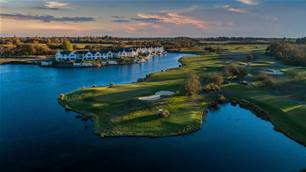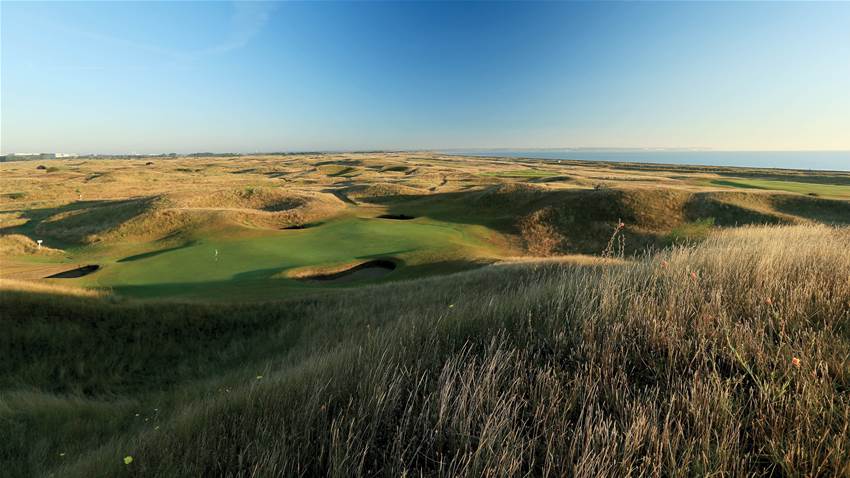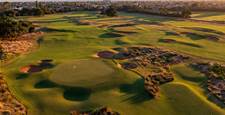From the golf courses played on the game’s biggest pro Tours to interesting short courses and the public layouts in our biggest urban centres, the architectural quality of those layouts in a post-COVID golfing world will be important for the game and the environment.
Tying together improving golf courses and short courses was the 2007 redesign of RACV Healesville where Bruce Grant, John Sloan and I took a bad 5,000-metre course, shortened it and made it into something Doak said in his Confidential Guide to Golf Courses, “It’s rare for a course of 5,600 yards to be on interest to better golfers, but isn’t that really because most such facilities never make an effort to succeed. The redesign of Healesville proves it can be done and done with flair.”
Public golf is important in introducing players to the game. Much of suburban public golf is pretty rudimentary but it’s possible to have good, simple, rudimentary design.
Or a bad version of it.
If ever Clover Moore wins the battle (one she should never be allowed to win) to take nine holes from Moore Park, ‘the game’ must insist on an investment in the remaining nine (or 12) holes to make them as good as they can possibly be.
Government can’t just take golf and not invest in what they leave behind and Golf Australia needs to fight the position for all its worth.
As the governing body, Golf Australia will be looked upon for leadership and one of the more useful things they could do is lobby for local councils to have less say over the vegetation management of golf courses.
Dealing with people with very little (likely none at all) understanding of the game can be pretty frustrating. They see any tree as something worth saving no matter its impact on the agronomy, the playability, the feel of the golf course or its environmental credentials.
The biggest environmental mistake of white settlement was an assumption we could import both flora and fauna and not have either negatively impact the fragile environment.
Foxes, rabbits, cane toads, carp, kikuyu grass and Radiata pines haven’t done any of us any favours and they are just a start.
In its own way, golf did the same as courses were planted with a mix of European and native (a fad of the 1960s) trees. Perth is almost 600 kilometres further from Melbourne than London is from Moscow but is anyone importing Russian trees into London and arguing they are ‘natives’?
“Golf needs to sell its environmental benefits much better and a huge part of that should be golf courses remaining and becoming the great suburban preservers of indigenous vegetation …”
No one in the 1930s was arguing the case for primarily using indigenous plants. Presumably the English settlers couldn’t see the beauty in the harsh, dusty, hot land they had discovered and determined to make it more like the old country.
Either way, following the principle of planting, and replanting, golf courses with indigenous vegetation should be done with a 50- and 100-year vision to restore the natural environment. Golf courses over the next century have a chance to be great suburban environments where indigenous vegetation is restored and allowed to thrive. Nothing could be more important than rectifying mistakes of the past – good intentioned though they might have been.
In stark contrast to Sydney’s frustrating tree bureaucracy, try driving up Perth’s coastal highway from Karrinyup to Yanchep.
Look left is to witness bulldozers flattening ancient sand dunes, and their amazing covering vegetation, to build housing estates with McMansions jammed together to maximise the developer’s profits.
It’s hard to believe it’s even the same country.
Golf needs to sell its environmental benefits much better and a huge part of that should be golf courses remaining and becoming the great suburban preservers of indigenous vegetation because, heaven knows, Australian cities haven’t been very good custodians.
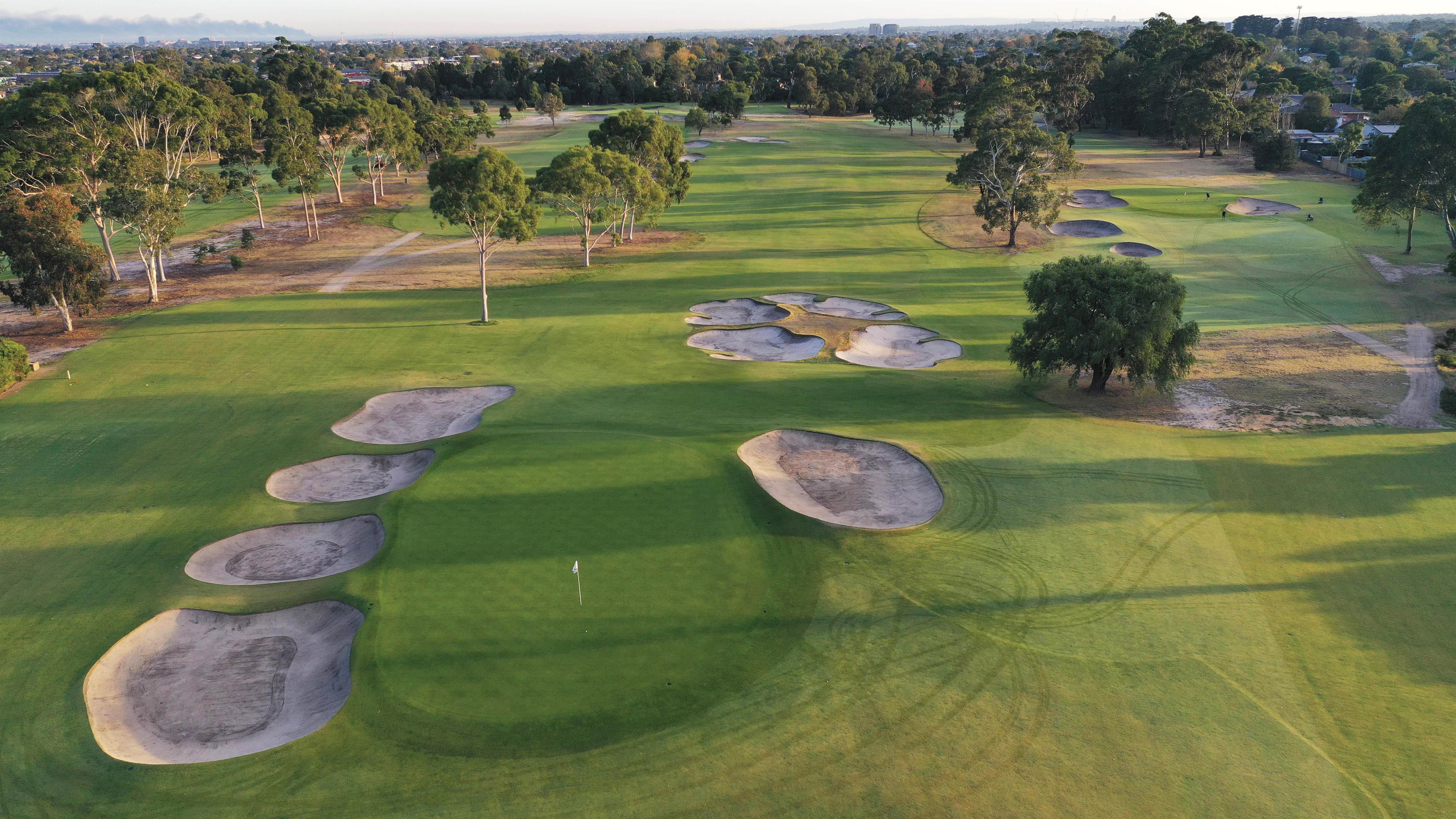
FULL STEAM AHEAD
It is not an exaggeration to say the COVID-19 pandemic has been the most impactful episode on the golf industry since World War II.
As restrictions started to ease it was evident the desire to play golf still burned deeply in the community. As the old adage says, you don’t know how much you miss something until it is gone.
Main competition days at clubs were no longer prime time. The squeeze on every available spot on the booking sheet on every day of the week has been unlike anything we have seen before.
Despite this recent surge in participation, there is undeniable evidence many golf clubs were struggling to stay relevant and remain viable under the traditional member subscription model prior to the pandemic. Younger people, in particular, were becoming increasingly time and cash poor and the luxury of golf club membership was simply not a priority in their fast paced world.
As we emerge into a post-COVID lockdown world, economists are predicting a tightening of household purse strings and lowering of disposable incomes. We can be certain things will change and our challenge is to imagine the future and to navigate the ‘new normal’.
The management conundrum has been to keep those immersed in golf connected while at the same time making the sport accessible to a new generation.
Prior to COVID, Royal Hobart Golf Club members approved a site masterplan as a guiding document to refresh, not only the course, but also the broader facilities. The brief was to update and improve the on-course playing experience, to significantly upgrade the practice areas and to consider adding some gateway elements such as a par-3 course and interesting putting green, in a similar vein to the popular ‘Himalayas’ at St Andrews.
We wanted to broaden the golf experience and adding to these golf elements, improve the amenity of the site with a range of possibilities such a gymnasium, heated pool, medical and physical therapy suites and on-site accommodation.
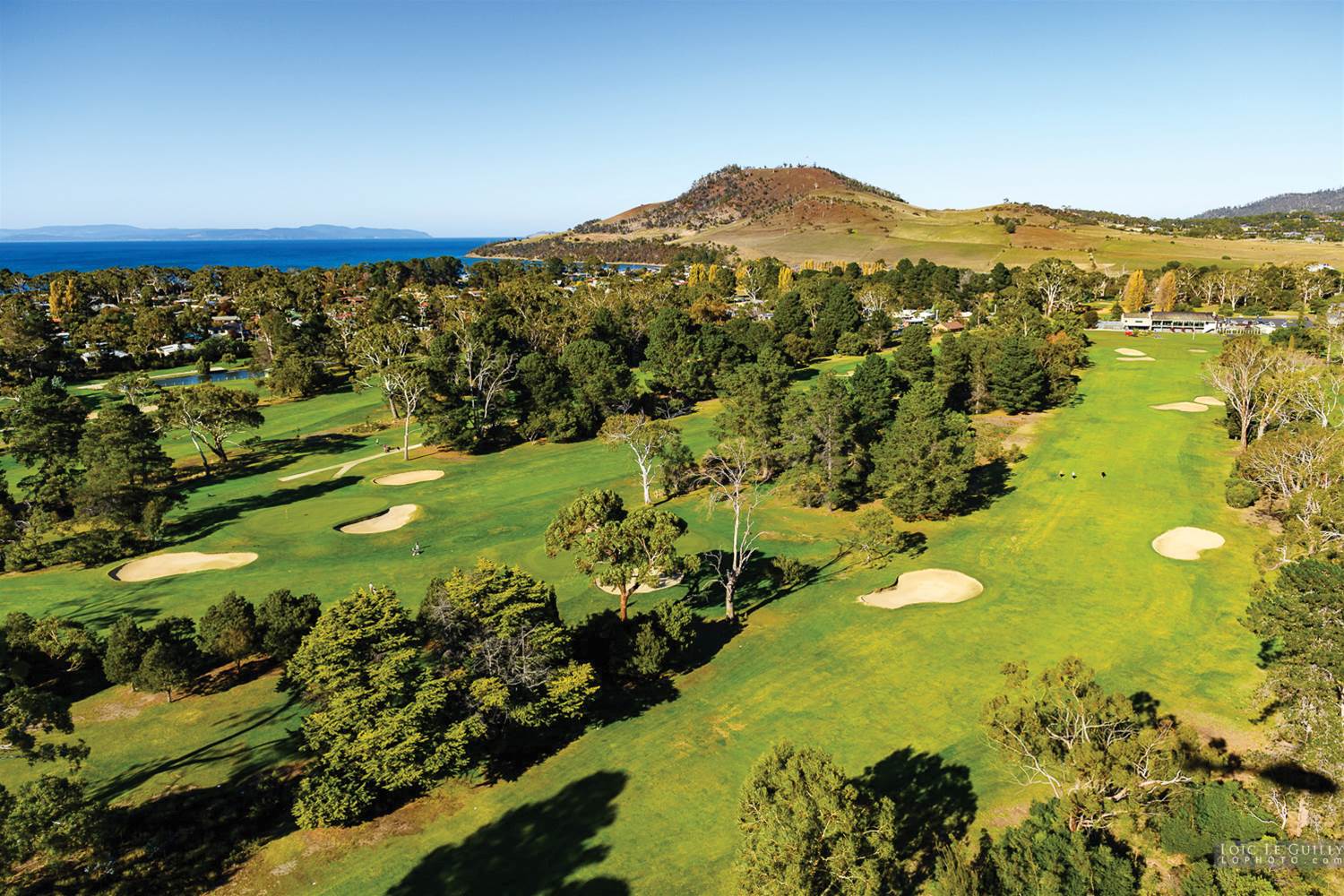
The masterplan is not aimed at making the course easier or more difficult but instead providing strategic options for golfers to provoke thought and interest which varies each day. The level of risk chosen by the golfers will determine its difficulty and their success in shooting a better score. Most of all it will be about creating a course which is fun to play for all, but creates challenges no matter what level of player you are.
When I took on the General Manager role at the club there was a realisation that we simply had to experiment, adapt and change, in order to avoid the consequences of a declining membership and a crystal clear trajectory. Events like drive-in movie night, wizard’s high teas and themed Friday night dining became essential drivers of ancillary revenue, not to mention the enormous buzz these things create in the community. Last year we had more first time visitors to the club than ever before and our social membership almost doubled as a consequence. Innovation will continue to drive our ambition.
So where do we go from here?
The biggest risk is not taking one at all. It is a bankable fact that if clubs dish up the same old, same old, they will eventually wither on the vine.
For us at Royal Hobart, COVID has done nothing but strengthen our resolve to continue our course and property redevelopment. This is not the time to revert into our shells and ride it out. The ticking of the doomsday clock for the already struggling club will only accelerate in the post-COVID world and it is folly to think that there will be a miraculous surge in the demand for the traditional golf subscriptions.
In my ideal world the collective group of families trying ‘real’ golf for the first time on our par-3 course, or members and visitors alike taking advantage of our state-of-the-art practice facilities, or the kids having a Saturday putting competition on our enlarged ‘Himalayas-style’ putting green, or the locals enjoying cocktail night in our clubhouse, or the folks from the lifestyle village across the road attending a water aerobics class, will all be just as big a part of the Royal Hobart Golf Club story as the traditional subscription member. Our course and clubhouse renovation is central to this vision.
The future of golf club management is not for the faint of heart so I say ‘full steam ahead!’
- John Mendel, General Manager of Royal Hobart Golf Club
Related Articles
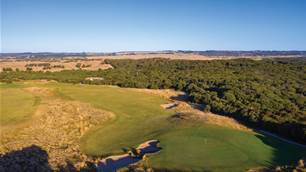
Course Review: St Andrews Beach
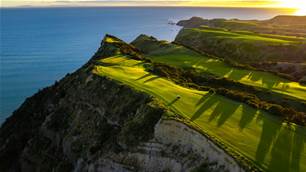
Course Review: Cape Kidnappers
